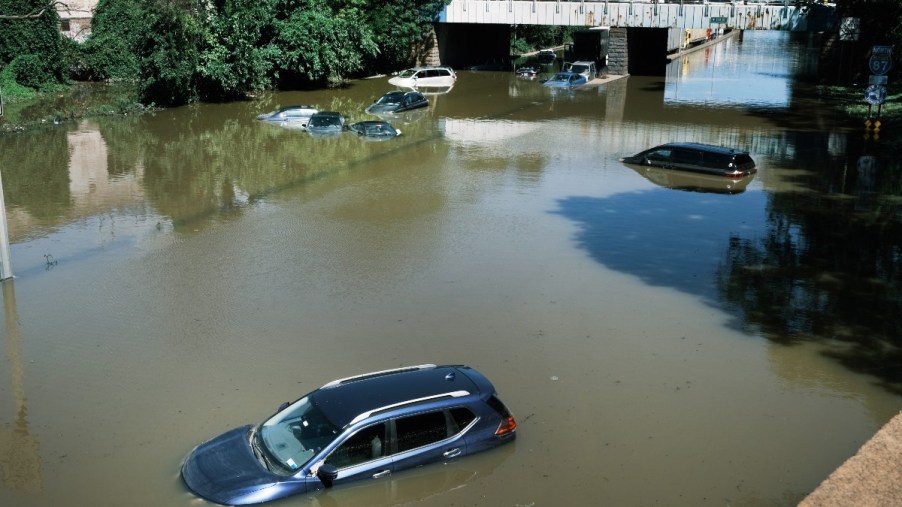
Flood Damaged Cars Could Become More Common on Dealership Lots
All over the country, people and dealerships alike feel the effects of the increased popularity of used cars. Over the last few years, used cars have become more popular because of the scarcity of new models. Because of that, dealerships have been looking for ways to stock their lots with good used cars. Despite a slew of regulations and rules, vehicles damaged by a flood could show up on a dealership lot.
Is it OK to buy a flooded car?
If you are looking for a car and find out that it has been flood-damaged, should you buy it? While a dealership can clean it up and make it look nearly as good as new, that could hide some big issues. If the car was in a flood, you would want to know how deep it was in the water. For example, if the water did not significantly damage the electrical system, the vehicle could function properly but be susceptible to rust and corrosion.
Another big question you should ask yourself is how long the car was underwater? If it was in the water for a short time, the likelihood of long-lasting damage is lower. But, if the car was submerged in water for longer, you could end up with more issues in the long run.
If you are still considering a flood-damaged car, you will also want to know what type of water the car was under. For example, if salt water covered the vehicle, the car could certainly suffer corrosion much quicker. If it was fresh water, you are still at risk for rust and corrosion, but that damage could happen much later.
Finally, when looking at a flood-damaged car, you will want to know if it has a “Flood” or “Salvage” title. This means that it was too expensive to repair, and unless you spend time and money, there is a risk of serious problems.
While buying a flood-damaged car can be a risky choice, for a short-term option, it can be wise to consider one. Furthermore, choosing one of these models can be a good choice for drivers looking to repair and rebuild a car.
How can a flood-damaged car get on a dealership lot?

With the scarcity of used cars, dealerships could end up stocking the lot with flood-damaged vehicles. This usually happens shortly after a big storm as drivers want to get rid of the damaged car. During this process, the original owner will retitle the car, clean it up, and flip it. This could mean that an unaware shopper could buy the vehicle and possibly suffer issues further down the road.
Even if there was significant damage to the vehicle, the original owner or the dealership may attempt to hide those problems. This car could end up on a dealership lot by doctoring the title or not reporting the damage to insurance. It is also important to note that these vehicles often end up at a dealership in a different state from where the flood happened.
What can you do to identify water damage?

If you are looking at a used car and suspect that it may have water damage, there are a few things you can be on the lookout for. Firstly, before doing a physical inspection, Consumer Reports recommends getting a thorough vehicle history on the car. Aside from running a check through a trusted source such as Carfax, you can also check the VIN or run a background check on the vehicle. If there is any damage, it should be on the report.
Some physical signs of water damage aren’t clear, but some can be very apparent. First, with water damage, there is likely to be an odd smell from the wet fibers. Otherwise, other things you should inspect:
- Check to see if carpets were once waterlogged by examining for caked-on mud or, again, a smell
- Inspect the seat screws to see if they were recently removed
- Look for a water line on the exterior lights
- Check tough-to-reach spots for debris
- Look for dirt or grime where it would be odd for it to be normally
- Check for rust on unpainted screws or metal
- Check the rubber plugs on the bottom of the door or under the car
If you take those steps and are still unsure, get an inspection from a licensed mechanic. A mechanic can certainly see if there is damage and will alert you of any issues.
What happens if you already bought a flood-damaged car?
Now, what can you do if you did buy a vehicle and realized that it was flood-damaged? If you purchased the vehicle from a licensed and reputable dealership, some protections might be available to you. Whether through your insurance or the courts, it could often cost you. The best protection against this is to do a thorough inspection and get a vehicle history report before you purchase the car.
Avoid the headache and don’t buy a water-damaged car
When shopping for a used car, you want to be diligent to ensure it is not water damaged. If you notice that the vehicle you like in is too good of a deal or notice inconsistencies in the condition, be wary. It could be enticing to get a great deal and save money, but you could end up paying much more for a flood-damaged car.
With floods being a yearly occurrence and drivers looking to get rid of their damaged vehicles, these cars could end up at a dealership. Dealerships are supposed to state if a vehicle has suffered flood damage, but that does not always happen. As a shopper, you must be mindful of ensuring you don’t end up as the owner of a previously-waterlogged vehicle.


